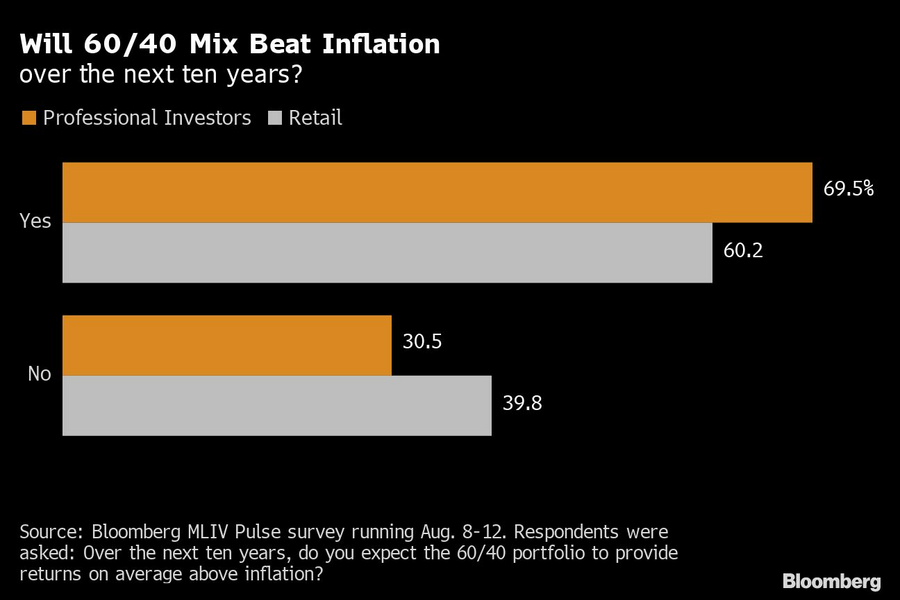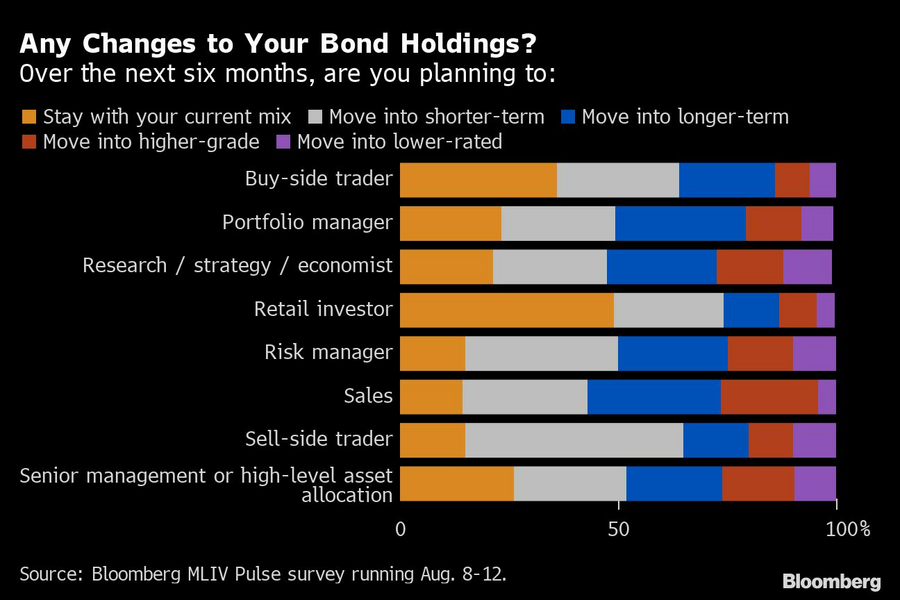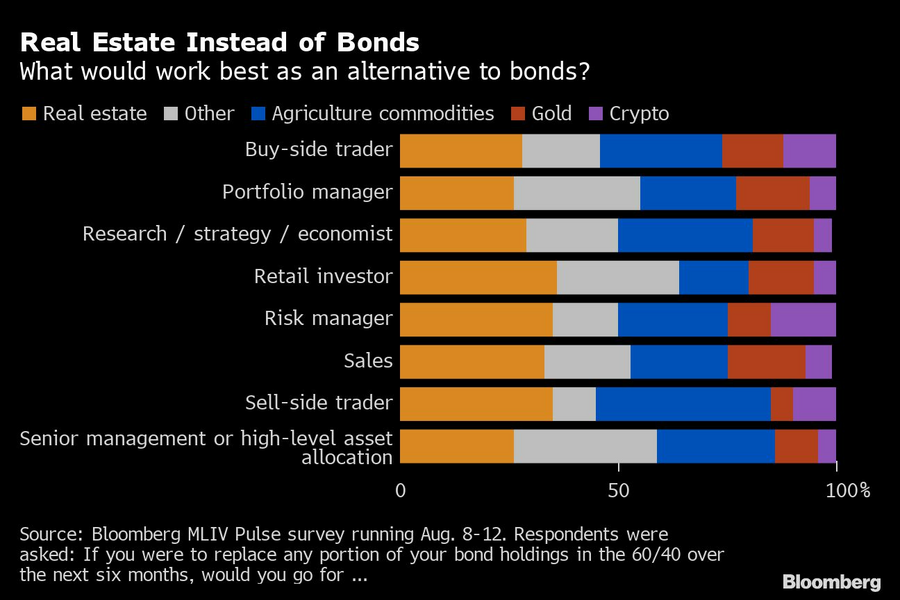

Investors think a good way to beat inflation is to lean on one of the oldest strategies — a 60-40 mix of stocks and bonds.
The tactic has taken a beating this year as bonds were hit by the steepest slump in decades, compounding the stock market's losses instead of buffering against them. And investors are far from certain that the strategy will bounce back this year. Yet the latest MLIV Pulse survey found that investors, by a margin of roughly 2-to-1, still see it as a viable strategy for delivering returns that exceed inflation over the next decade. The survey included responses from 1,056 investment professionals and individual investors.

The results underscore the faithful following the strategy has despite the cries about the “death of 60/40.” Those have grown louder in 2022 as the Federal Reserve’s response to soaring inflation crushed both stocks and bonds. Even with the recent stock rally, the U.S. mix has left investors with a loss of about 10% this year, putting it on pace for the deepest drop since the 2008 credit crisis, according to Bloomberg’s index.
When it comes to the near term, however, investors are mostly split on whether it will bounce back this year. About half of the survey respondents said that the correlation between fixed income and equities will be positive in the next six months, meaning the two asset classes will move in tandem. That wouldn’t bode well for the investment strategy since it’s built on the idea that losses on one side will be offset by gains on the other, which has tended to be the case historically.
“I have a negative view on both equities and bonds now because interest rates will continue to rise,'' said Greg Whiteley, portfolio manager at DoubleLine Capital. “That also suggests that Treasuries are not the best place to go as a haven right now if you are concerned about equities.’’
The financial markets have been hit hard this year. The unexpectedly stubborn inflation is driving the Fed to raise interest rates at the most rapid pace in decades, beating a swift retreat from the easy-money policy of the pandemic that boosted bonds and equities. Although stocks had risen for four straight weeks, disappointing data from China has pushed U.S. equity-index futures down in early Monday trading.
The uncertainty around the Fed's path has increased volatility across asset classes and made it difficult for anyone to make money on nearly any strategy. Cryptocurrencies, which were once touted as an inflation hedge, have tumbled this year while investors with international allocations have been hit by wild swings in foreign currencies. But the pain in 60/40 may be the most disappointing because it’s long been promoted as a strategy that can weather all storms for everyday investors.
Despite the concern that the 60/40 portfolio may not be out of the woods yet, investors are largely sitting on their hands when it comes to positioning. About half of retail investors said they are most likely going to keep the bond portion of their 60/40 portfolio the same over the next six months rather than switch up their maturity or credit mix. Over half of respondents also agree that U.S. Treasuries are the best risk-free asset in their fixed-income allocation over the next six months.

“This anti-60/40 thing is nonsense,” said Steve Chiavarone, portfolio manager at Federated Hermes. “Every time we had a major growth scare over the last year, you’ve seen the 10-year Treasury yield rally. So all the characteristics of bonds, being a defensive player, are absolutely still there.’’
In recent months, Treasuries have showed signs of resuming their defensive role. The benchmark 10-year yield pulled back sharply after mounting concern that tighter financial conditions will set off a recession, hitting a low on Aug. 2 of around 2.5%, almost a full percentage point below the mid-June peak. It has since risen back to about 2.85% after a surge in hiring and still high inflation weakened concerns about an imminent slowdown in economic growth.
“Fixed income absolutely earns its place in a portfolio now because it actually has income,'' said Lisa Hornby, head of U.S. Multi-Sector Fixed Income at Schroders. The U.S. “is moving toward a growth slowdown phase now, which should be more supportive for bonds. So, we could again begin to see bonds offer diversifying properties in portfolios.’’
If investors were to replace the bond portion with a different asset, they’re not pivoting to crypto. The most popular alternative for both professional and retail investors was real estate. Only 6% said they would replace their bonds with cryptocurrencies. Other options included cash, laddered CDs and equities with dividends. Gold also lacks support among respondents as an alternative to bonds, despite higher geopolitical tensions this year.

"Going outside, into other real assets, real estate, private equity, private credit can be a healthy addition to the portfolio and really help diversify your returns,'' Nuveen Chief Investment Officer Saira Malik said in a Bloomberg TV interview.

Relationships are key to our business but advisors are often slow to engage in specific activities designed to foster them.

Whichever path you go down, act now while you're still in control.

Pro-bitcoin professionals, however, say the cryptocurrency has ushered in change.

“LPL has evolved significantly over the last decade and still wants to scale up,” says one industry executive.

Survey findings from the Nationwide Retirement Institute offers pearls of planning wisdom from 60- to 65-year-olds, as well as insights into concerns.
Streamline your outreach with Aidentified's AI-driven solutions
This season’s market volatility: Positioning for rate relief, income growth and the AI rebound
